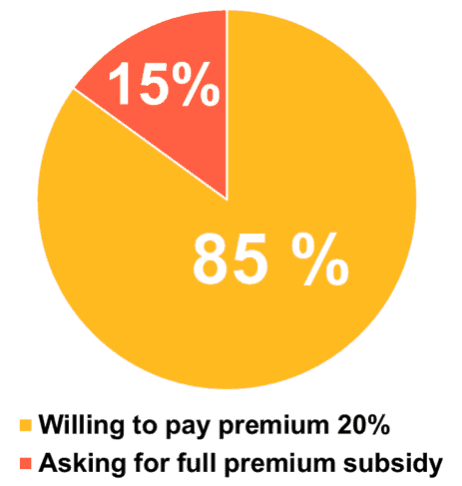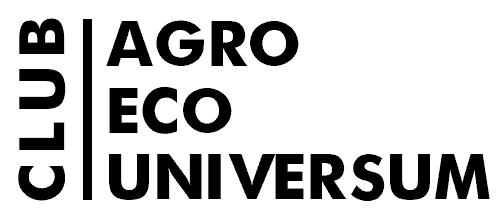Risk and Opinion Analysis Improves Agricultural Insurance in Bali

Survey and statistical analysis of the opinions of farmers and analysis of the reasons for the poor harvest key to modernize the agricultural insurance system
All areas of agriculture, including rice farming, which is widely distributed in Southeast Asia and Indonesia, are exposed to the risks of various natural and weather phenomena. Floods, droughts, pests and other events can lead to harm. The practice of agricultural insurance is widespread and has proven its worth in Western countries. Agricultural insurance is one method by which farmers can stabilize farm income and investment and guard against disastrous effect of losses due to natural hazards or low market prices.
Many developing countries are already involved in agricultural insurance practices. For example, in Nigeria, farmers receive subsidies from the state in particularly bad years in order to continue their activities in the future. Thailand micro-insurance scheme was provided for rice in 2011. That scheme covered six natural disasters such as flood, drought, windstorm, frost, hail and bush fire. Bank for Agriculture and Agricultural Cooperatives (BAAC) played a major role since the crop insurance started.
The government of Indonesia launched crop insurance system implemented in 2015 to mitigate farmers from failure of rice production. The agricultural insurance scheme is based on indemnity of the rice production cost. It is stated in the agreement that farmers can claim maximum compensation of IDR 6 million per hectare land insured for one rice planting season. The premium rate is 3% of the total claim and will be paid by the state-owned insurer. The insurance covers flood, drought and several pests and diseases subject to the intensity of damage reaching 75% as per criterion set by the insurer, and the acreage of such damage reached 75%. This arrangement is designed to encourage farmers to stick on to good farming practices and to minimize loss pertinent to the rice planting practices among farmers.
Farmers in Bali participated in the program covering 5.675 ha during the planting season of October 2015 and January 2016. The government paid IDR 817 million, and farmers paid IDR 204 million of the total premium of IDR 1021 million. The total area claimed for the insurance payment in March 2016 was 34 ha. It was only 0.6% of the total insured in Bali. In terms of rice production, it implies that rice farming in Bali works well as only small amount was claimed as failure.
This study aims to portray rice production risks to failure and farmer’s perception on the implementation of agricultural insurance in Bali province. As part of this study, a survey was conducted of 180 farmers working in the regions of Tabanan, Jembrana and the city of Denpasar (60 farmers each, who were randomly selected).
In terms of rice production risks to failure, this study finds that the main issues of harvest failure from rice production in Bali were pest and disease attacks, ranging from light to severe level.
Main claims for the agricultural insurance as in March 2016

Results of the study show that all farmers perceived that agricultural insurance program developed by the government is a mitigation risk towards harvest failure. This study also finds that to a large extent (85%) of respondents asked for full premium subsidy from the government, while the rest were willing to pay the 20% premium. In addition, farmers asked for more than 6 million per hectare for the compensation.
The results of a statistical analysis of a survey of farmers showed that distribution of farmers’ perception towards agricultural insurance is indifferent across locations. Result from this study shows that farmers ask for more than IDR 6 million per hectare for the claim, which indicates that they do not understand the premium rate and subsidy.
Comparison of respondents in terms of premium payment

This in turn means that it is necessary to increase the degree of awareness of farmers about all the nuances of the insurance contract, that is, to engage in the popularization of knowledge about the insurance institution. To a large extent, this can be facilitated by an increase in premium government subsidy from 20% to 100%, as most respondents said.
The results obtained by studying the attitude of farmers to the modern insurance system can be used to improve it in the long run. The obtained statistics on the most frequently occurring risks can be applied to create a flexible insurance system depending on the frequency and specificity of emerging threats in a particular region of the country. Also, the experience of the introduction and subsequent modernization of agricultural insurance in Bali can be applied in other regions of Indonesia.
Full Text:
Ambarawati I. G. A. A., Wijaya I. M. A. S., Budiasa I. W. Risk mitigation for rice production through agricultural insurance: farmer’s perspectives //Jurnal Manajemen & Agribisnis. – 2018. – V. 15. – №. 2. – P. 129.
